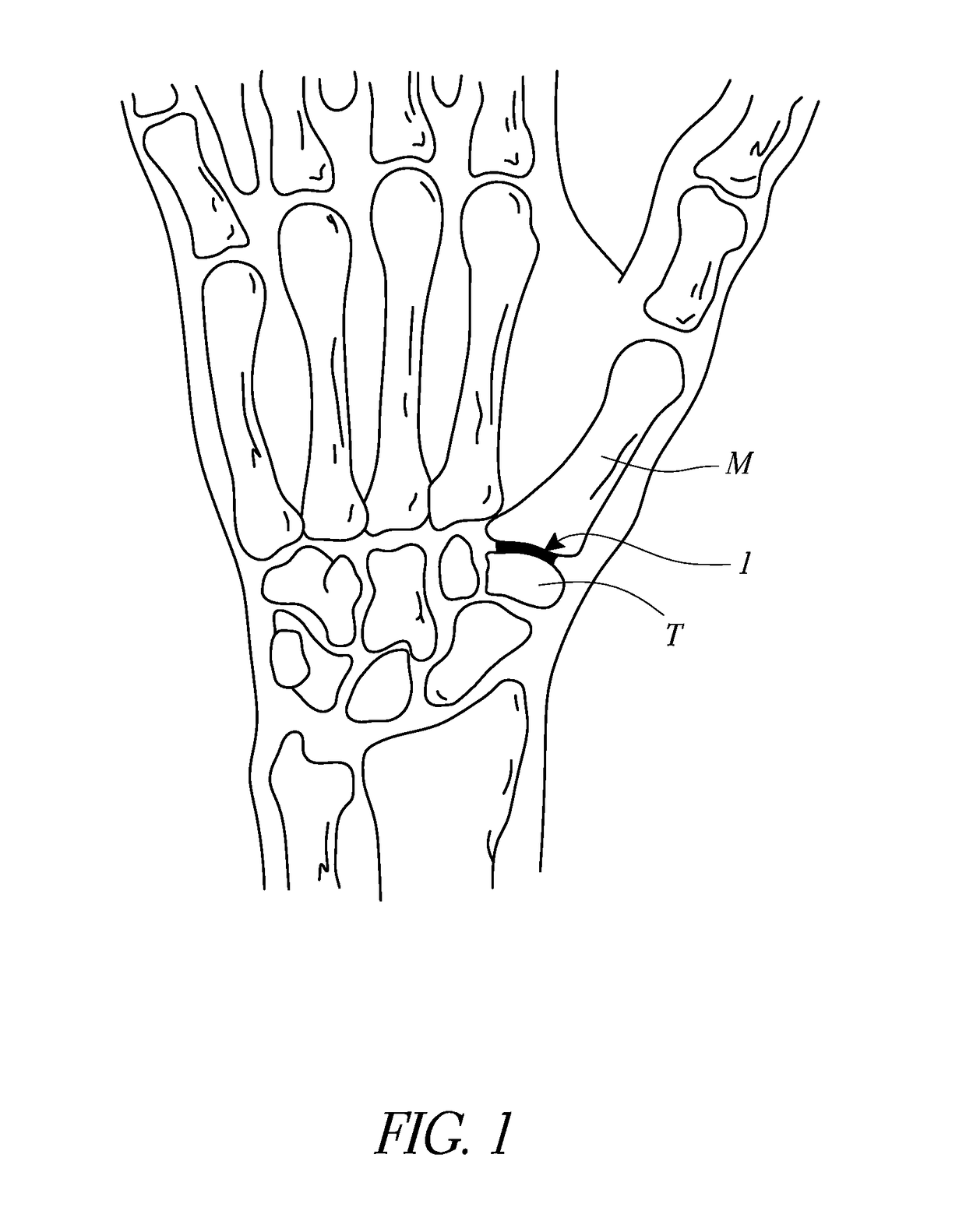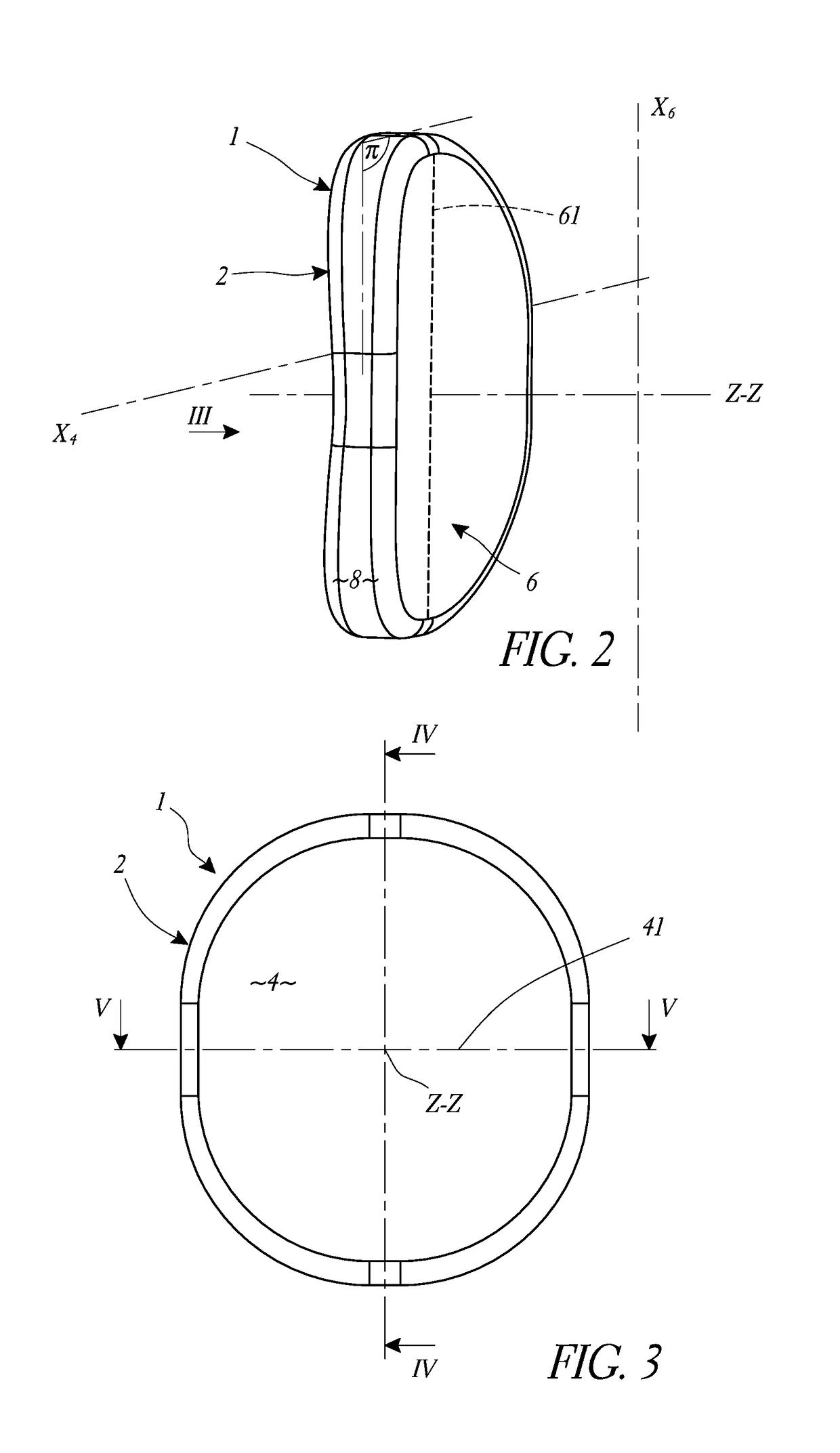Trapeziometacarpal joint implant and associated methods
a technology of a cartilage joint and a proximal bone, which is applied in the field of proximal bone implant, can solve the problems of real risks of wear, luxation, or even fracture of the prosthesis, and achieve the effects of reducing the likelihood of being forced into the bones, retaining the mobility of the joint, and minimizing the thickness
- Summary
- Abstract
- Description
- Claims
- Application Information
AI Technical Summary
Benefits of technology
Problems solved by technology
Method used
Image
Examples
Embodiment Construction
[0017]As used herein, the terms “frontal,”“antero-posterior,” and similar terms are to be understood in their anatomical sense in relation to a patient whose hand is being operated upon. With that in mind, in FIGS. 1 to 5, a trapeziometacarpal implant 1 is shown which is designed to be implanted by interposition in a trapeziometacarpal joint between a trapezium T and a first metacarpal M of a human hand, as is shown by way of example in FIG. 1.
[0018]The implant 1 comprises a generally disk-shaped body 2 centered on a geometric axis Z-Z, also described as a transverse axis. The body 2 delimits a first main surface 4 and a second main surface 6, also referred to as metacarpal and trapezium joint surfaces, respectively, or primary bone contact surfaces, for example. In some embodiments, the first and second main surfaces 4 and 6 are positioned opposite each other on the axis Z-Z and separated from each other by the thickness of the body 2 along the axis Z-Z. The body 2 also includes a ...
PUM
| Property | Measurement | Unit |
|---|---|---|
| thickness | aaaaa | aaaaa |
| thickness | aaaaa | aaaaa |
| area | aaaaa | aaaaa |
Abstract
Description
Claims
Application Information
 Login to View More
Login to View More - R&D
- Intellectual Property
- Life Sciences
- Materials
- Tech Scout
- Unparalleled Data Quality
- Higher Quality Content
- 60% Fewer Hallucinations
Browse by: Latest US Patents, China's latest patents, Technical Efficacy Thesaurus, Application Domain, Technology Topic, Popular Technical Reports.
© 2025 PatSnap. All rights reserved.Legal|Privacy policy|Modern Slavery Act Transparency Statement|Sitemap|About US| Contact US: help@patsnap.com



